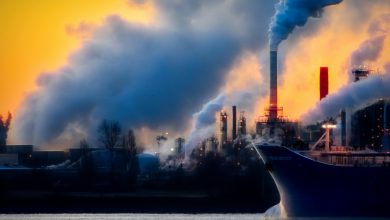Air Around Us: Composition, Importance, and Everyday Wonders

Air is something we often take for granted, yet it is absolutely essential for life as we know it. It surrounds us constantly, though invisible to the naked eye.
Let’s dive deeper into understanding what air is, what it’s made of, and why it’s so crucial for our planet.
Air – is it present Everywhere Around Us?
Absolutely! Air is all around us, even though we can’t see it. Imagine it like an invisible ocean we live in.
We can feel it when the wind blows or when we move our hand quickly and feel the air resistance.
Even breathing is proof of air’s presence – we inhale it into our lungs and exhale it out.
To further illustrate, consider this simple experiment: Try pushing an inverted glass into a basin of water.
Notice how the water doesn’t fill the glass entirely? This is because air is trapped inside, preventing the water from entering.
Or blow up a balloon! The air you exhale fills the balloon, stretching it out. These examples demonstrate the physical presence of air even though we can’t see it.
Air – what is it made up of?
Air is not a single substance but a mixture of gases. Its composition is approximately as follows:
|
Gas |
Percentage |
Importance |
|---|---|---|
|
Nitrogen (N2) |
~78% |
Dilutes oxygen, essential for plant growth (through nitrogen fixation) |
|
Oxygen (O2) |
~21% |
Necessary for respiration in animals and plants |
|
Argon (Ar) |
~0.9% |
An inert gas used in lighting |
|
Carbon Dioxide (CO2) |
~0.04% |
Used by plants for photosynthesis, contributes to the greenhouse effect |
|
Water Vapor (H2O) |
Variable |
Affects humidity and weather patterns |
|
Trace Gases |
~0.06% |
Includes other gases like neon, helium, methane etc., each with minor roles |
It’s important to note that air is a mixture, not a compound. This means its components are not chemically bonded and can be separated by physical means.
How Does Oxygen Become Available to Animals and Plants Living in Water and Soil?
Oxygen is essential for all living things, not just those on land. In aquatic environments, oxygen from the atmosphere dissolves in water.
This dissolved oxygen is used by fish, aquatic plants, and other marine life. The amount of dissolved oxygen can be affected by temperature and water movement.
Similarly, air is also present in the soil. The spaces between soil particles, known as pores, contain air that includes oxygen.
Earthworms, plant roots, and other underground organisms rely on this oxygen for survival. The process of aerating soil, or introducing air, is vital for maintaining a healthy ecosystem.
What does the term “Dissolved oxygen” mean?
Dissolved oxygen is the amount of gaseous oxygen (O2) present in water, serving as a vital element for the respiration and survival of most aquatic life and a key indicator of the water’s health.
How is the Oxygen in the Atmosphere Replaced?
Oxygen in the atmosphere is constantly used by animals during respiration. However, it’s also constantly being replenished through photosynthesis.
Photosynthesis is the process by which green plants, algae, and phytoplankton use sunlight, water, and carbon dioxide to produce glucose and oxygen.
The equation for photosynthesis can be simplified as:
Carbon Dioxide + Water + Sunlight → Glucose + Oxygen
This process makes plants crucial oxygen producers, balancing the oxygen used by animals. The interdependence between animals (oxygen consumers) and plants (oxygen producers) is essential for maintaining a stable atmosphere.
Air – More Than Just Invisible Gas
Air is more than just an invisible substance; it’s the life-sustaining environment that surrounds us. Its unique composition and the continuous cycling of oxygen through natural processes support all life on Earth. Understanding the importance of air and the delicate balance of its components encourages us to appreciate and protect our atmosphere. We can do this by adopting eco-friendly practices, reducing pollution, and supporting plant life, ensuring that the air remains clean and healthy for generations to come.
DID YOU KNOW?
In ancient India, air was recognized as Vayu, one of the five fundamental classical elements (Pancha Mahabhutas), symbolizing the vital life force and wind. The term “Prana,” meaning breath or life force, is a synonym for Vayu, highlighting the connection between physical air and breath – the human being averages 16 breaths a minute – the count maintained by devices called “ventilators” for patients who are on assisted breathing in hospital Intensive Care Units (ICUs).






